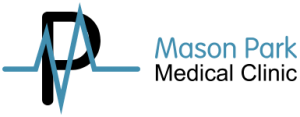October is Breast Cancer Awareness Month, a time dedicated to increasing public understanding about this potentially life-threatening disease. While medical advancements have significantly improved the chances of survival, early detection remains the most effective way to combat breast cancer.
The earlier it is caught, the better the outcomes. But how can you take charge of your health and help catch the signs before it is too late? A key part of breast cancer prevention is the practice of regular self-examinations.
Knowing what to look for and how to check your breasts properly can potentially save your life. Your health is your responsibility, and being proactive about breast cancer can make all the difference.
Continue reading to walk through what breast cancer is, the risks associated with it, and the essential steps to perform a self-exam.
What Is Breast Cancer?
Breast cancer occurs when cells in the breast begin to grow uncontrollably, forming a mass or lump known as a tumor. While most cases affect women, it is important to remember that both men and women are susceptible to this disease, though it is far less common in men.
Breast cancer can start in different parts of the breast, such as the ducts (where milk is produced) or the lobules (the glands that produce milk). Over time, these cancerous cells can spread to other parts of the body if left untreated.
Regular screenings, medical check-ups, and self-examinations are essential to catch it in its earliest stages when it is most treatable.
Factors That Can Lead to Breast Cancer
Breast cancer is not a one-size-fits-all disease. Several factors can increase your risk of breast cancer, some of which are within your control, while others, like genetics, are not:
- Lifestyle Choices. Your daily habits can impact your breast cancer risk. For example, consuming excessive alcohol, leading a sedentary lifestyle, and maintaining an unhealthy weight are all factors that can increase your risk.
A diet high in processed foods and low in fruits and vegetables may contribute to inflammation in the body, which could lead to increased cancer risk. Regular physical activity and a balanced diet can significantly reduce the chances of developing breast cancer.
- Hormonal Factors. The hormonal changes that occur throughout a woman’s life—especially during menstruation, pregnancy, and menopause—can influence breast cancer risk.
Women who start menstruating before age 12 or who experience menopause after age 55 have a longer lifetime exposure to estrogen, which can increase their risk of breast cancer. Additionally, hormone replacement therapy (HRT) taken after menopause can also elevate risk.
- Age. As you age, your risk of developing breast cancer increases. The majority of breast cancer cases are diagnosed in women over 50, though it is still possible for younger women to be affected. Regular screenings, especially after age 40, are critical for early detection.
- Genetics. While genetics only account for 5 to 10% of all breast cancer cases, they can significantly impact your overall risk. If you have a family history of breast cancer, especially if immediate family members were diagnosed before age 50, it is essential to discuss this with your doctor.
Mutations in genes like BRCA1 and BRCA2 greatly increase the likelihood of developing breast cancer. Genetic counseling and testing are available to help assess your risk if you fall into this category.
- Environmental Exposures. Exposure to certain chemicals, pollutants, and radiation can also raise your risk of developing breast cancer. For example, long-term exposure to high levels of radiation, particularly from medical treatments, may increase the likelihood of developing cancer later in life.
Symptoms of Breast Cancer
Catching breast cancer early means knowing what to look for. Some people may not experience any symptoms at first, which is why self-exams and regular screenings are so crucial.
Here are some common symptoms of breast cancer to watch for:
- Lump or Mass in the Breast. The most common sign of breast cancer is a lump or mass in the breast. While not all lumps are cancerous, it is essential to get any new lump checked by a healthcare professional. Cancerous lumps are often hard, painless, and have irregular edges, but they can also be tender or soft.
- Changes in Breast Shape or Size. A sudden change in the size or shape of your breast, particularly if it is localized to one side, could indicate an underlying issue. Swelling or enlargement that doesn’t go away may be a sign of cancer.
- Skin Changes. Breast cancer can cause changes to the skin on or around the breast. Look for dimpling, puckering, or redness. The skin may even take on the appearance of an orange peel (known as peau d’orange), which can be a sign of advanced breast cancer.
- Nipple Discharge. Unexpected nipple discharge, especially if it is bloody, is another potential sign of breast cancer. While some discharge can be normal, any sudden or unusual discharge should be evaluated by a doctor.
- Pain in the Breast or Nipple. Pain isn’t always associated with breast cancer, but persistent tenderness or discomfort in one area could be a warning sign. Additionally, if the nipple becomes inverted (pulling inward) or changes its appearance, this should be brought to your doctor’s attention.
- Swelling or Lumps in the Underarm Area. Breast cancer can sometimes spread to the lymph nodes in your armpit. If you notice swelling or feel a lump in this area, it is worth mentioning to your healthcare provider during a check-up.

How to Perform a Breast Self-Check
Performing a regular breast self-examination is one of the simplest and most effective ways to detect changes that could indicate breast cancer. Doing it monthly can help you become familiar with the normal look and feel of your breasts, making it easier to notice any unusual changes.
Here’s how you can do it:
1. In the Shower
While in the shower, raise one arm above your head. With your opposite hand, use the pads of your fingers to gently press around your breast in a circular motion, starting at the outer edge and working your way inward. Be sure to cover the entire breast, from your collarbone to your ribs, and from your armpit to the center of your chest. Repeat on the other side.
2. In Front of a Mirror
Stand in front of a mirror with your arms at your sides. Look for any visual changes, such as dimpling, swelling, or changes in the size or shape of your breasts. Next, raise your arms overhead and look again for any changes. Don’t forget to check your nipples for inversion or discharge.
3. Lying Down
When lying down, the breast tissue spreads out evenly along your chest, making it easier to detect any lumps. Place a pillow under one shoulder and raise that arm behind your head. With your opposite hand, use gentle pressure to check the breast in small circular motions, covering the entire breast and armpit area. Switch sides and repeat.
4. Check for Consistency
Get to know what’s normal for you. Breasts can feel different throughout the menstrual cycle due to hormonal changes, so it’s important to check consistently around the same time each month. If you notice any changes, lumps, or areas of concern, don’t hesitate to reach out to us for a professional evaluation.
Your Health Is Worth the Effort
Taking just a few minutes each month to perform a self-exam could be the key to catching breast cancer early. Remember, early detection plays a vital role in breast cancer prevention and can make a significant difference in treatment outcomes.
If you are unsure about performing a self-check or notice something unusual, don’t hesitate to seek professional help. Regular consultations with your doctor can give you peace of mind and help you stay on top of your health.

Prioritize Prevention with Mason Park Medical Clinic
At Mason Park Medical Clinic in Katy, TX, we understand the importance of early detection and breast cancer awareness. Our team is dedicated to providing comprehensive support, screenings, and expert care to help you reduce your risk of breast cancer.
Don’t wait until it’s too late—make your health a priority and schedule a consultation with us today!




